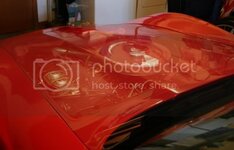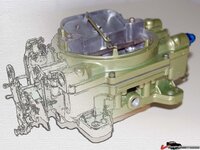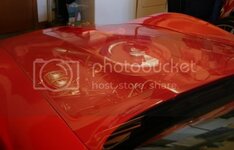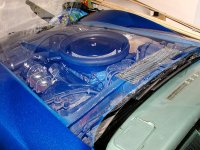You are using an out of date browser. It may not display this or other websites correctly.
You should upgrade or use an alternative browser.
You should upgrade or use an alternative browser.
How damn cool is this??
- Thread starter saudivette
- Start date
MYBAD79
Moderator
sweet.... how did you do this ?
If it isn't to much to explain give us a How-To.
Or a reference to which of their books explain it.
I have CS2 and a number of Photoshop Books
but have barely scratched the surface on what
that program can do.
BTW....that is pretty darn cool. :thumbs:
Or a reference to which of their books explain it.
I have CS2 and a number of Photoshop Books
but have barely scratched the surface on what
that program can do.
BTW....that is pretty darn cool. :thumbs:
Twin_Turbo
Der Maulwurf
- Joined
- Mar 5, 2008
- Messages
- 7,579
2 layers, one layer with a gradient mask. The sketch layer has some kind of artistic effect right?
73 Mike
I'll drive it someday
Very cool. Also, could be excellent for explaining something, Can't do much better than combining a part and a schematic.
mrvette
Phantom of the Opera
Very cool. Also, could be excellent for explaining something, Can't do much better than combining a part and a schematic.
I dunno, I just look at the object, and it's self explanatory to me....
except the 'off idle transfer circuit'....NOW I understand that, but it sure as hell wasn't apparent to me years ago....
:devil:
73 Mike
I'll drive it someday
Very cool. Also, could be excellent for explaining something, Can't do much better than combining a part and a schematic.
I dunno, I just look at the object, and it's self explanatory to me....
except the 'off idle transfer circuit'....NOW I understand that, but it sure as hell wasn't apparent to me years ago....
:devil:
I wasn't really thinking about this specific case. Maybe as an example, showing the electrical connector end of a starter solenoid in the picture part and the internal contact cylinder in the schematic part. I had to cut one apart in high school auto shop to figure out how these really worked. One of these would do the same thing (though mine was far more fun).
mrvette
Phantom of the Opera
Very cool. Also, could be excellent for explaining something, Can't do much better than combining a part and a schematic.
I dunno, I just look at the object, and it's self explanatory to me....
except the 'off idle transfer circuit'....NOW I understand that, but it sure as hell wasn't apparent to me years ago....
:devil:
I wasn't really thinking about this specific case. Maybe as an example, showing the electrical connector end of a starter solenoid in the picture part and the internal contact cylinder in the schematic part. I had to cut one apart in high school auto shop to figure out how these really worked. One of these would do the same thing (though mine was far more fun).
DeJaVu all over again.....
:harhar:
saudivette
Clueless In Sandland
sweet.... how did you do this ?
If it isn't to much to explain give us a How-To...
Hell no, I can't explain how I did it. Ha, I'm surprised it turned out
But, if you go here http://www.planetphotoshop.com/photo-to-drawing.html you can view the tutorial - there's loads of other cool tutorials there too.
If anyone wants something like that done to a pic of their Vette or something, let me know and I'll have a crack at it - I'd like a bit more practice at it on something a little more exciting than a carb...
Last edited:
Hell no, I can't explain how I did it. Ha, I'm surprised it turned out
:lol:
Actually........that was the answer I was expecting.
I have their "Classroom" in a book along with a number of other Photoshop publications.
I'll set for hours trying to learn to do a particular thing. My kids will be standing
behind me watching....not saying a word. I'll come home from work the
next day and they'll show me all these cool effects they can now do. :huh:
I ask if they read the book........ No they just figured it out watching me
the night before..:gurney: The sad part is ... I still haven't figured it out
myself.....with the BOOK..:banghead:
MYBAD79
Moderator
Here's a "experiment" that I conducted in 2005 or 2006 .... I mounted the camera on a tripod and took a pic with the hood open and another one with the hood closed... then used 50% transparency in photoshop and laid the two photos on top of each other.... This is a lot easier with a 35mm film camera (for those of you who remember these)...LOL

.

.
saudivette
Clueless In Sandland
John, if you look at that link I posted, the tutorials are done in flash player so you watch it like a youtube movie and you can pause it and rewind it as much as you need - much easier than trying to follow a book :thumbs::lol:
Actually........that was the answer I was expecting.
I have their "Classroom" in a book along with a number of other Photoshop publications.
I'll set for hours trying to learn to do a particular thing. My kids will be standing
behind me watching....not saying a word. I'll come home from work the
next day and they'll show me all these cool effects they can now do. :huh:
I ask if they read the book........ No they just figured it out watching me
the night before..:gurney: The sad part is ... I still haven't figured it out
myself.....with the BOOK..:banghead:
saudivette
Clueless In Sandland
Pretty cool
Dirtbuster1
Well-known member
You guys have way much to time on your hands.
saudivette
Clueless In Sandland
Just out of curiosity Karsten, why was it easier to work with 35mm film over digital images? You must have had to scan the film pics into a digital format so that you could photoshop them?...This is a lot easier with a 35mm film camera (for those of you who remember these)...
MYBAD79
Moderator
Just out of curiosity Karsten, why was it easier to work with 35mm film over digital images? You must have had to scan the film pics into a digital format so that you could photoshop them?...This is a lot easier with a 35mm film camera (for those of you who remember these)...
With a 35mm camera you can do a double exposure, take a pic (hood open), do not transport the film, close the hood and take another pic (hood closed) - the two layers will be just like what I did in photoshop.
I think a few of these $1500 digital SLRs have that function as well, my Rebel XT does not.
saudivette
Clueless In Sandland
Ahhh... ok. I think my Pentax K10 (digital) can do that but I haven't read all the way through the encyclopedia that came with it yet. Anyway, I'm pretty comfortable messing with Photoshop to acheive the same end result. I might mess around with something this weekend...
With a 35mm camera you can do a double exposure, take a pic (hood open), do not transport the film, close the hood and take another pic (hood closed) - the two layers will be just like what I did in photoshop.
I think a few of these $1500 digital SLRs have that function as well, my Rebel XT does not.
I did the same kind of thing with just one exposure. It needs a bit more trial and error though. First one was in a totally dark garage, about 30sec exposure time, first hood open and shoot once with hand held flash. Then close the hood and shoot the flash again. These two flashes during that 30sec exposure time. Needs a bit testing with the aperature, but works out pretty nicely. Got to find that pic, it's somewhere in my archive... (Me and my great archiving system...)
Same works also in low light, long exposure time, first with hood open a while, then close the hood in a hurry (you can cover the lens with a black paper for that short moment if you want and then few seconds of exposure with hood closed. You can higlight some details with flash or hand held lamp if you want. This is easier to if you have an assistant to close the hood.
Somehow I like to do it in "old fashioned" way, even though I'm young. It's like cheating to use photoshop... But I have to admit that it is easier to use photoshop and it gives better outcome. But I like the feeling to do this with the camera, not with photoshop! :drink:
saudivette
Clueless In Sandland
That looks pretty good, but you'd still need photoshop if you wanted to remove the ghost of the hood in the open position  h:
h:



